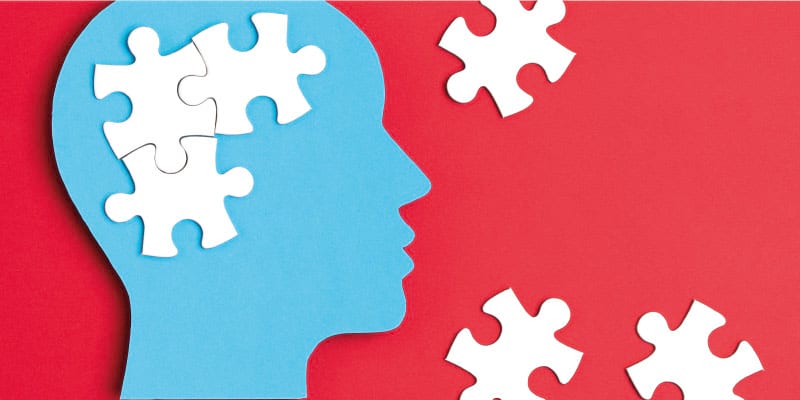Gestalt Theory of Learning (Kohler)

Gestalt Theory of Learning: the Gestalt Theory of Learning is a psychological theory, developed by Wolfgang Kohler that describes how people learn. Next to what it is, this article alo highlights examples of Gestalt theory of learning, how to use and principles the disadvantages, views of this theory and a short summary. After reading, you will understand the basics of the Gestalt Theory of Learning theory. Enjoy reading!
What is Gestalt Theory of Learning?
The Gestalt Theory of Learning is an educational philosophy based on the tenets and ideas of gestalt psychology.
Gestalt literally means “whole” or “unified.”
The theory states that the whole of a set of stimuli, such as verbal and nonverbal communication, has a greater influence on behavior than individual parts; individuals can gain more from studying elements of a subject in relationship to one another rather than simply memorizing them by themselves.
In this way, new information is taught alongside previously learned material so that no piece of information exists alone but as part of a unified lesson plan.
In particular, the Gestalt theory focuses on how humans learn, which is based upon our previous experiences with similar objects or from other senses such as sound and smell.
This means that when you see an object on the table, your brain will fill in all of its features based on your previous experience with similar objects or from other senses. Gestalt theory argues that we don’t need to be taught these associations because we already know them naturally: it’s our automatic response to a stimulus.
It was first proposed by German psychologist Wolfgang Kohler in 1912 and has been expanded upon by many psychologists since then, including Max Wertheimer (1923), Kurt Koffka (1935), and many others.
Examples of Gestalt theory of learning
If you were asked to describe a person who you met before, you might start off describing the hair color, clothes, height, etc.
But after seeing the face, you’d probably notice she looked familiar too. That’s because you’ve associated certain facial characteristics with someone else whom you knew well.
When you’re trying to remember where you put down your keys, you may think back over the last few minutes and recall where you left them. But if you try to do this while looking at a picture of those same keys, you’ll find yourself unable to identify them.
The Gestalt theory of learning says that there is a connection between the form of the teacher’s voice and the students’ understanding of the content being presented. This is called “the principle of similarity”. For example, if the teacher speaks slowly and clearly, his/her speech pattern becomes similar to the student’s internal model for speaking.
A child at school sees a form on the board with the word ‘kangaroo’ next to it. The child thinks of Australia, smells eucalyptus, and hears the locals speaking in their native tongue, creating a gestalt that they are learning about kangaroos.
The Gestalt Theory in philosophy
The Gestalt Theory is based on the idea that learning is a result of observing and comprehending stimuli in relation to one another, not just individually.
The theory emphasizes the importance of an individual’s awareness of their environment and how it integrates with their previous knowledge and experience.
The Gestalt Theory of Learning is known as a holistic philosophy theory because it points out that knowledge can be absorbed through the common link between all of our senses, not just through words or individual experiences.
While this school of thought was initially devised as a theory of learning, it has since been adopted into other educational philosophies, including critical pedagogy and project-based learning.
Gestalt Theory of Learning in Education
The Gestalt Theory of Learning in education refers to the utilization of our senses as well as past experiences to comprehend stimuli. It shows how humans’ response to innate associations can contribute towards knowledge acquisition. In this context, the central question is: what shapes knowledge?
The theory underlines this idea that everything we encounter shapes who we are, including teaching methods, school culture, and classroom environment.
The idea extends to how we learn throughout our lifetime (i.e. learning outside of the classroom) and how it shapes our perspectives on knowledge, information, and data.
There is no set way to teach according to the Gestalt Theory of Learning. Instead, the approach used is completely situational based on what works for each individual student.
The method is focused primarily on how humans’ process knowledge rather than simply focusing on content or information.
Become a SuperLearner® 2: Learn Speed Reading & Boost Memory.
The original course to learn faster & more easily using the skills of the worlds fastest readers & memory record holders
How to use and principles
The best way to use the Gestalt Theory of Learning in practice is to create a situation where students are given the opportunity to observe many stimuli in relation to one another.
In this case, project-based learning would be an exemplary teaching method because the children are then able to learn through their own experience rather than observation or by being told what they need to know.
This approach allows them to see the different parts of a topic and how they relate to each other within a whole picture, which is crucial for applying knowledge outside of school.
Learning cannot happen as fast as humans would like it to be – we still require guidance from our teachers throughout the duration of our education (i.e. lectures).
However, Gestalt theory shows us that humans can acquire knowledge much faster when given opportunities such as those provided by project-based learning.
Disadvantages
- It does not provide any specific guidelines regarding how to implement the theory.
- Some people believe that the theory is too vague and difficult to understand.
- Many educators do not agree with the theory’s emphasis on experiential learning.
- The theory has been criticized for promoting passive learning.
- The theory focuses more on human behavior than on cognitive processes.
- The theory emphasizes the importance of context but fails to explain why certain contexts work better than others.
- The theory assumes that all learners will respond similarly to similar situations.
- The theory ignores cultural differences between individuals.
Views on Gestalt theory of learning
The Gestalt Theory of Learning is described by theorists as being holistic, emergent or constructive, and active. Learning does not happen in a linear fashion from A to B but through a process called emergence where consequences build upon consequences, producing a unique experience for each individual.
For example, if one person decided to stay indoors all day they’re going to have a different experience than someone who went outside that same day because they’ll encounter different stimuli during the two days.
Another important aspect of this theory is that everything is connected with everything else, so if something changes, it will affect how other things change around it. This can be seen through the Gestalt Theory of Perception, which says that things are perceived as wholes before all the parts are seen.
Other aspect of gestalt learning is that it happens in an active way, rather than passively observing something.
The individual does not simply sit there and take in information, but they try to focus on what is important for themselves – this may consist of looking away or really focusing on specific aspects related to their own goals.
This makes sense because if you’re trying to learn about some topic, you can’t be expected to know everything, so you’d need to choose what’s most important for you first.
The best way to improve your learning experience would be through project-based learning because then students will have more opportunities to feel like they’re learning as a whole.
It’s important to note that this theory does not discredit the importance of lecturing from teachers, because it still serves as a valuable method to raise student awareness about specific topics and provide them with a general understanding of what is being taught beforehand.
Summary
Gestalt theory can be applied to teaching methods in general. Its emphasis on experiential learning makes this approach more effective than any other instructional technique. Each student’s experience with a certain object will be different based upon their role.
In addition, when working within a group setting, students must work together to achieve common objectives.
These factors make projects ideal for developing skills such as teamwork, leadership, communication, problem-solving, critical thinking, creativity, self-awareness, etc., while also providing ample opportunity for hands-on practice.
The main advantage of the Gestalt theory is its ability to help individuals understand concepts better. By understanding concepts, you will gain insight into your surroundings and therefore become aware of things around you. You will notice patterns and relationships that exist among objects and events.
Through this process, you will develop skills that allow you to solve problems and find solutions to everyday situations.
It is your turn
What do you think? Have you used this method of learning with your students or people around you? Do you think this method is still important for students in their academic life? Do you have any suggestions or some comments that you want to share with us?
Share your experience and knowledge in the comments box below.
More information
- Ikehara, H. T. (1999). Implications of gestalt theory and practice for the learning organisation. The Learning Organization.
- Spence, K. W., & Lippitt, R. (1946). An experimental test of the sign-gestalt theory of trial and error learning. Journal of Experimental Psychology, 36(6), 491.
- Hilgard, E. R., & Bower, G. H. (1966). Theories of learning.
- Chang, D., Dooley, L., & Tuovinen, J. E. (2002). Gestalt theory in visual screen design—A new look at an old subject.
- Examlabs: an information sharing platform.
How to cite this article:
Ospina Avendaño, D.(2022). Gestalt Theory of Learning (Kohler). Retrieved [insert date] from Toolshero: https://www.toolshero.com/psychology/gestalt-theory-of-learning/
Original publication date: 01/26/2022 | Last update: 01/10/2024
Add a link to this page on your website:
<a href=”https://www.toolshero.com/psychology/gestalt-theory-of-learning/”>Toolshero: Gestalt Theory of Learning (Kohler)</a>












